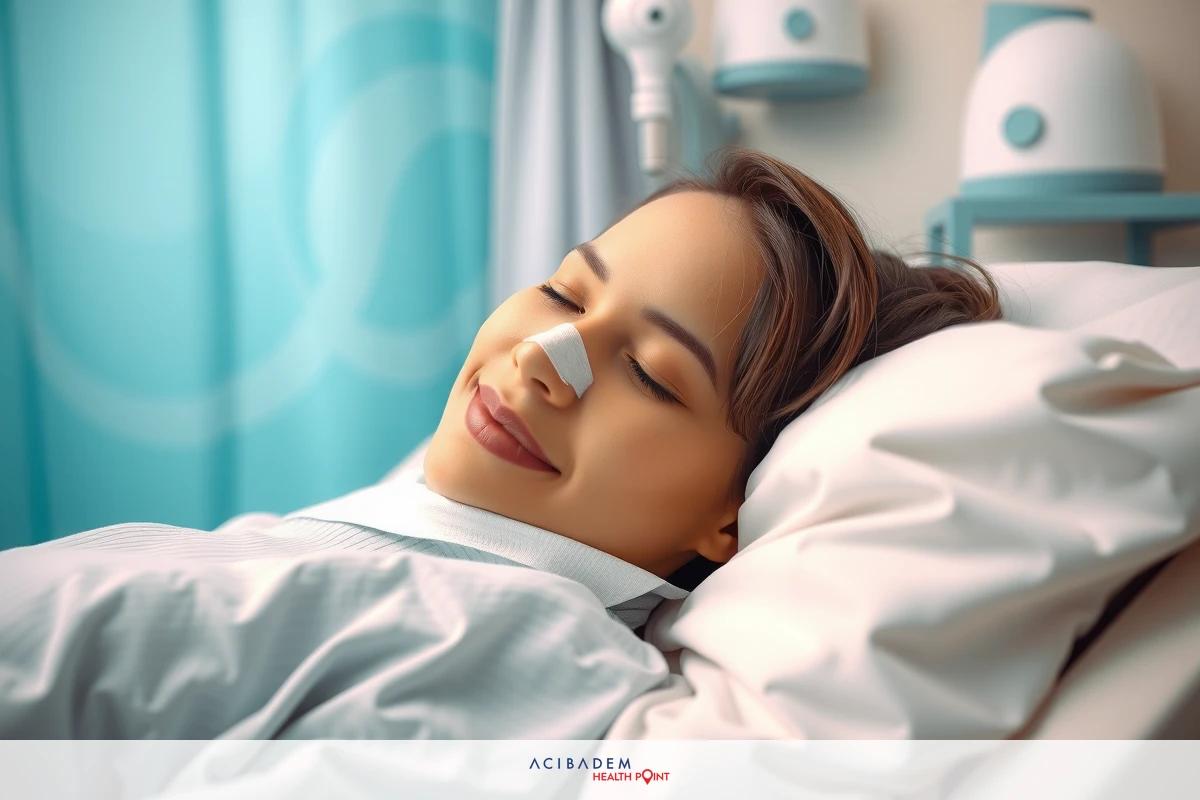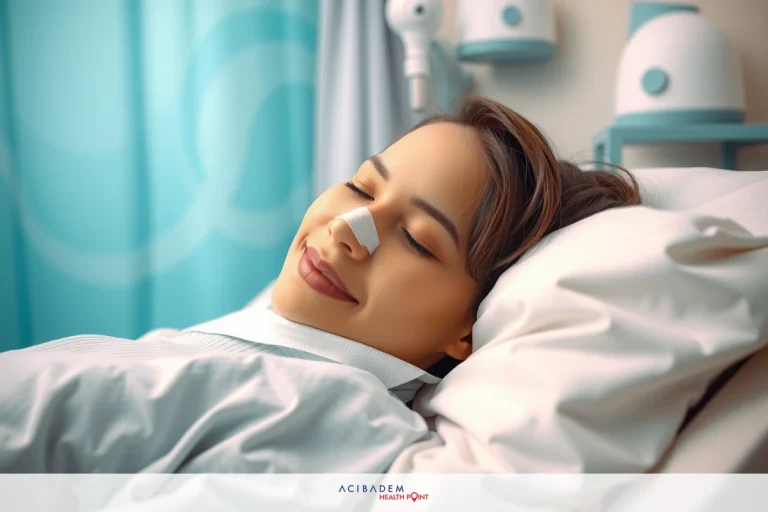Can I Clean Inside My Nose After Rhinoplasty?
Can I Clean Inside My Nose After Rhinoplasty? Rhinoplasty is a cosmetic surgery procedure designed to enhance or refine the appearance and function of the nose. Postoperative care is crucial to successful healing and achieving the desired results. One important aspect of this care involves cleaning the inside of the nose.
Patients often wonder when they can start cleaning their nose after surgery and what methods are safe to use. Proper nasal hygiene helps prevent complications, such as infection, and promotes faster recovery. This article provides valuable insights into safe and effective practices for maintaining nasal hygiene after rhinoplasty.
When Can I Start Cleaning Inside My Nose?
After undergoing rhinoplasty, it’s essential to wait for the recommended period before starting any form of nasal cleaning. It’s generally advised that patients should avoid any vigorous nose cleaning for at least one to two weeks after surgery. This is because the tissues inside your nose need time to heal. Early or aggressive cleaning can disrupt the healing process, leading to complications such as bleeding or infection.
During the first week, you may notice a buildup of mucus and blood in your nostrils. This is a normal part of the healing process following rhinoplasty. While it might be tempting to clean this out, it’s important to resist. Instead, you’re typically advised to use a saline spray, which can help keep the nasal passages moist without disturbing the surgical site. Always remember, the key aspect of postoperative care during this phase is giving your body ample time to recover.
Once your surgeon gives you clearance, usually during a follow-up visit, you can begin gentle nasal cleaning. The exact timing can vary depending on how your recovery is progressing. Your surgeon will guide you on how to clean your nose safely without affecting the rhinoplasty results. Adopting the right nasal hygiene practices at this stage contributes significantly to your overall rhinoplasty recovery and helps maintain the health of your newly shaped nose.
Safe Methods for Nasal Cleaning
Following rhinoplasty, there are several safe and effective methods for cleaning the inside of your nose. It’s crucial to remember that these techniques should only be started after you receive clearance from your surgeon. The goal is to maintain nasal hygiene without causing any harm to the healing tissues.
Here are some techniques that can be used for post-rhinoplasty care:
- Saline Spray: Using a saline spray is one of the gentlest ways to clean your nose after rhinoplasty. It helps to keep the nasal passages moist and aids in removing any mucus buildup. Always follow the instructions on the product and avoid overuse.
- Steam Inhalation: Breathing in steam from a hot shower or a bowl of warm water can help soften and loosen mucus, making it easier to gently blow out.
- Gentle Blowing: Once your surgeon has given you the approval, you can start to gently blow your nose. Avoid forceful blowing as it can cause bleeding or damage to the healing tissues.
4. Soft Tissues or Cotton Swabs: To clean the outer edges of your nostrils, you can use soft tissues or cotton swabs dipped in warm water or saline solution.
5. Maintaining Humidity: Keeping the air in your home humid can prevent your nasal passages from drying out. Using a humidifier, especially at night, can be very beneficial.

Remember, each individual’s recovery process after rhinoplasty is different. What works best for one person may not be suitable for another. Therefore, it’s always important to consult with your doctor regarding appropriate nose cleaning techniques during your recovery period.
Tips for Effective Nasal Hygiene
Maintaining proper nasal hygiene following rhinoplasty is a critical aspect of postoperative care. It plays a pivotal role in ensuring a smooth recovery and preventing potential complications, such as infections. The primary objective is to keep the nasal passages clean and moist while avoiding any harm to the healing tissues.
To achieve this, it is essential to follow your surgeon’s specific postoperative care instructions diligently. They will provide guidance on when and how to clean your nose effectively. Staying well-hydrated is another crucial step, as ample fluid intake helps keep the mucous membranes moist, reducing the risk of dryness and crust formation within the nasal passages.
Furthermore, resist the urge to pick your nose during the healing process, as this can cause harm to the delicate healing tissues and potentially lead to infections. Using a humidifier, especially in dry climates or while sleeping, can be immensely helpful in preventing the nasal passages from drying out.
Avoiding irritants like smoke and dust is also important, as they can exacerbate irritation in the nasal passages and hinder the healing process. Regular check-up appointments with your surgeon are vital to monitor your recovery progress and address any potential issues promptly.
In summary, effective post-rhinoplasty nasal hygiene goes beyond simple cleaning; it involves taking necessary precautions to safeguard your nose’s health. Since each individual’s recovery journey may differ, it’s crucial to consult with your healthcare provider before implementing any new cleaning practices to ensure they are suitable for your specific case.
Frequently Asked Questions
ow soon can I start cleaning the inside of my nose after rhinoplasty?
The timing for starting nasal cleaning after rhinoplasty varies, but it is generally recommended to wait at least one to two weeks before beginning any form of nose cleaning. It's important to allow sufficient time for the tissues inside your nose to heal before introducing any cleaning methods.
Can I use cotton swabs to clean inside my nose after rhinoplasty?
It is generally advised to avoid using cotton swabs or any other objects inside your nose for cleaning purposes. These can be abrasive and may disrupt the healing process or cause injury. Stick to gentle methods recommended by your surgeon, such as saline sprays or steam inhalation.
Can I blow my nose after rhinoplasty?
Blowing your nose should be done with caution and only when your surgeon gives you the go-ahead. Typically, you will need to wait until the initial healing phase has passed, which is usually within one to two weeks after rhinoplasty. Gentle blowing is recommended to avoid putting excessive pressure on the healing tissues.
Is it normal to have mucus and blood in my nose after rhinoplasty?
Yes, it is normal to experience a buildup of mucus and blood in your nostrils during the initial stages of recovery after rhinoplasty. This is a result of the healing process and should gradually decrease over time. Using a saline spray as recommended by your surgeon can help keep the nasal passages moist and aid in clearing out any excess mucus or blood.
How long do I need to maintain nasal hygiene after rhinoplasty?
Nasal hygiene should be maintained throughout the entire healing process after rhinoplasty, which can take several weeks to months. It's important to follow your surgeon's instructions and continue practicing good nasal hygiene until you are fully healed. This helps prevent infections, promotes proper healing, and ensures the best possible outcome from your rhinoplasty procedure.











